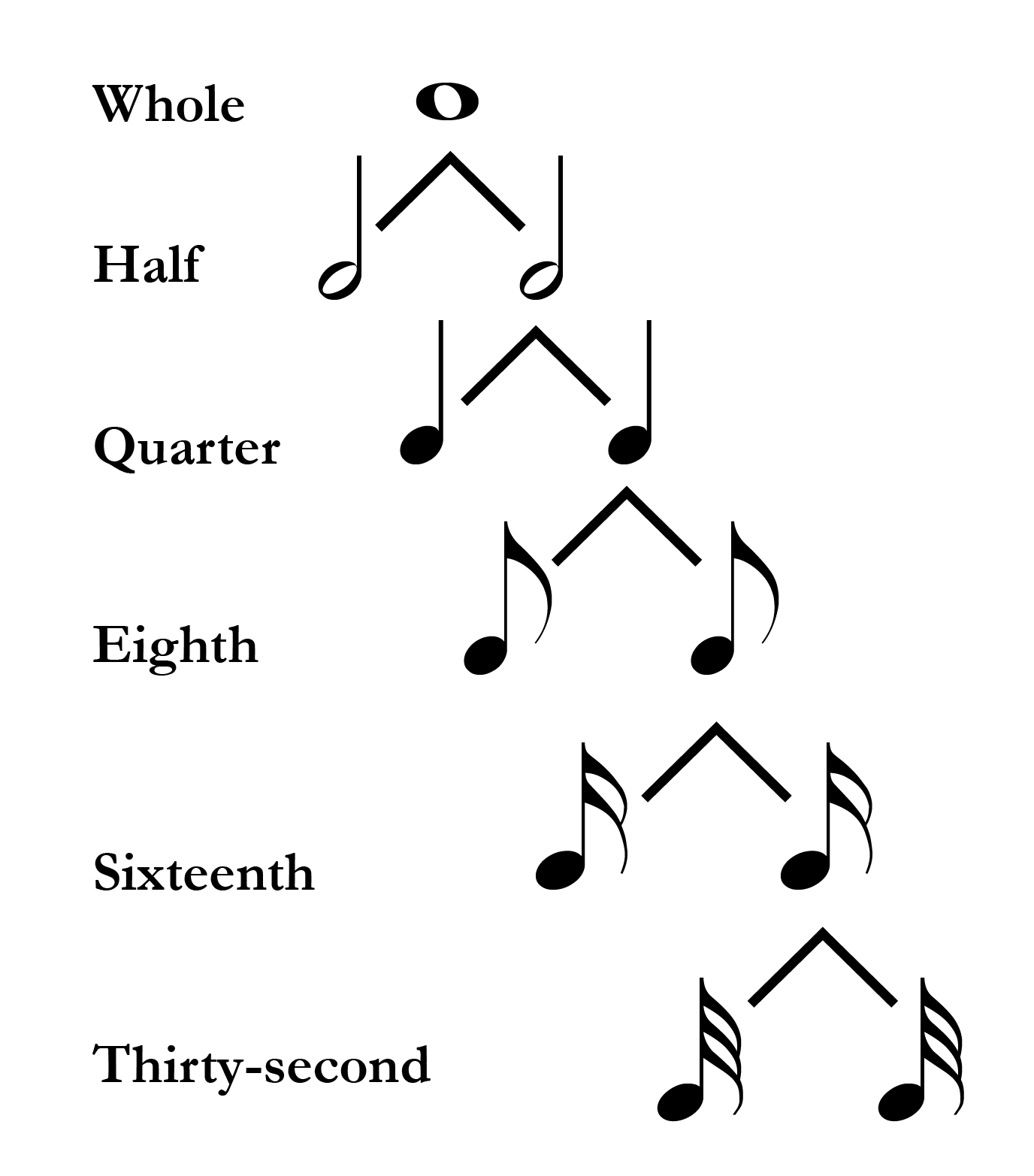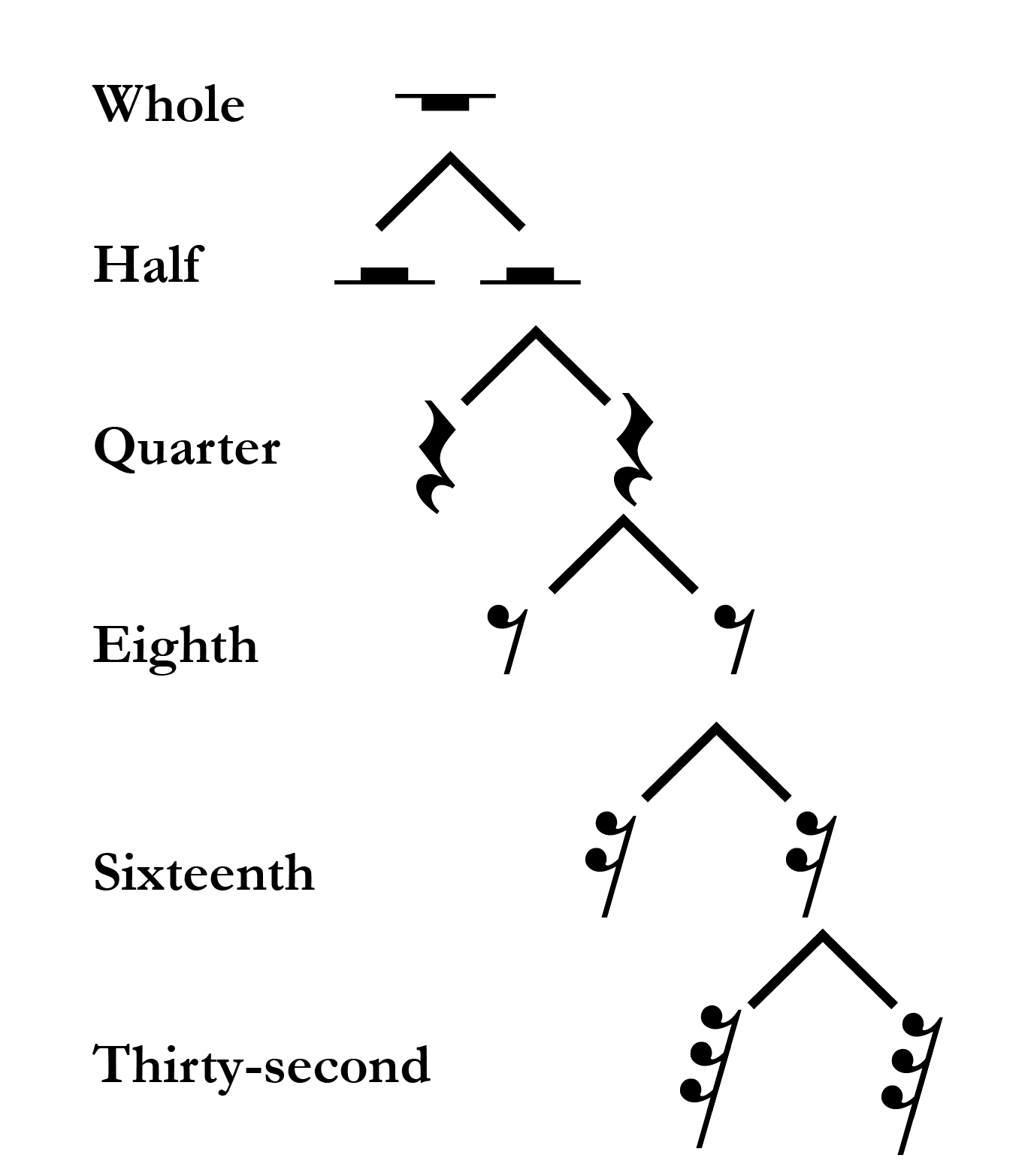Inquiry-Based Music Theory OER Text Book
Overview 4a - Simple Meters
Because we are assuming that you are already famililar with the basics of rhythmic notation, we will be skipping most of the basic rhythmic terminology. If you would like to review, I have included some materials from Open Music Theory at the bottom of this page.
Instead, we will be skipping ahead into classifications for meters. For today’s topic, we will be focusing exclusively on simple meters, one of the two classifications for regular meters.
We must agree on a few basic terms. Meter is the manner in which we organize strong and weak pulses in music over time, and it is from this grouping that we determine the length of each measure. At its most basic, meter tells us two things:
- how we divide the meter into regular or irregular pulses called beats
- how many of these beats are in the measure
If we imagine meter as a hierarchy, beats are the highest level. Beats are then divided into divisions, and divisions can be further divided into subdivisions. A regular meter is one in which every beat is the same length.
Finally, do remember that meter is somewhat subjective and can be greatly altered by many factors, especially tempo. Where one listener might listen to a piece with four quarter-notes per measure and feel that the quarter notes are the beat, another listener may listen to the same piece and hear the beat in a slow two with the half-note as the beat.
Further Reading
From Open Music Theory
Rhythm refers to the combination of long and short durations in time. Durations are notated with either unfilled or filled noteheads. Unfilled noteheads can appear with or without a stem; filled noteheads always appear with a stem. Flags can be added to the stems of filled noteheads; each flag shortens the duration by half.

Rests
Rests represent silence in musical notation. For each durational symbol there exists a corresponding rest.

Dots and ties
Dots and ties allow for basic durations to be lengthened. A dot occurs after a pitch or a rest, and it increases its duration by half. For example, if a quarter note is equivalent in duration to two eighth notes, a dotted quarter note would be equivalent to three eighth notes. Generally, undotted notes divide into two notes; dotted notes divide into three. Thus, undotted notes are typically used to represent the beat level in simple meter, while dotted notes are used to represent the beat in compound meter.
Multiple dots can be added to a duration. Subsequent dots add half the duration of the previous dot. For example, a quarter note with two dots would be equivalent in duration to a quarter, eighth, and sixteenth note.
A tie lengthens a duration by connecting two adjacent identical pitches. Ties are used to either sustain a pitch beyond the length of a single measure, or to make a particular rhythmic grouping in a measure more clear.
In the example below, the duration of the first pitch is longer than a single measure, so it is represented by tying the dotted half note, which lasts the full measure, to the first beat of the subsequent measure.

